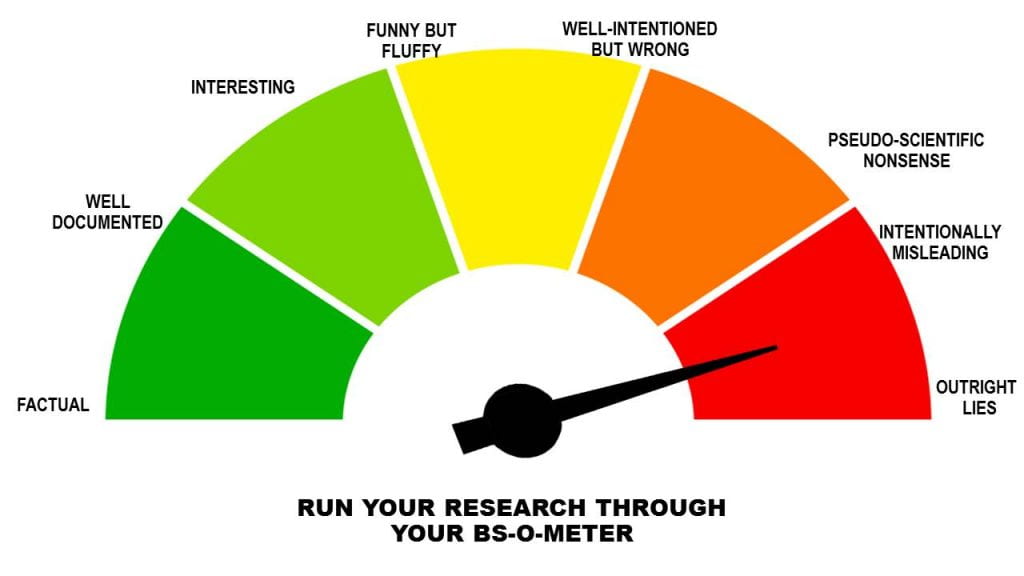Reflecting on Organisational, Managerial and Leadership Theory 2.2-2.3
REFLECTIVE: “Derive happiness in oneself from a good day’s work, from illuminating the fog that surrounds us.” Henri Matisse
(Matisse n.d.)

It is amazing to me how we all grow up getting used to the amazing structures of the past without acknowledging their significance in our present. Much like the ancient buildings showing through the fog in the image from Simon Matzinger (above) so are the structures of organisational, managerial and leadership theory from past and present all around us.
If we don’t take the time to reflect on and recognise the structures that exist and influence our actions, we are but living in a fog. Thus, I’ve spent a lot of time and brain energy this week on the subject…and as I peer into the fog of the history and research, I fear I have but scratched the surface.
I’m not alone in my experiences of poor leadership/management/organisational structure. I’m sure many of us in our mid 30’s and beyond have some war stories to tell…in my very first officially paid position in a grocery store, the front end manager and his assistant stole nearly $40 000 from the company (which became evident in the scandal that erupted when I accidentally took home a pack of $1 bills in my apron and nobody noticed until I turned it in the next day). Was this because they lacked the necessary leadership ‘trait‘ of integrity but it was assumed that they had that trait when they were hired? Was this because of the organisational structure being ‘divisional’ (Kokemuller, 2017) without actually any vision or sharing of vision?
I had quite a few retail positions in my youth. In one position, I worked in a bookstore and the manager was passive aggressive and controlling, possibly anal retentive…he would put dusting skills into our performance appraisals as a critique and used a texta to draw outlines of where he wanted the office supplies to go. Everyone on staff was very friendly and hard working and we all just managed ourselves and the store with very little need for input from him. Was this because of his leadership skill or ‘traits’ and lack thereof? Was he in an environment that called for a ‘transformational’ leader but he was stuck in the ‘autocratic’ leadership mindset? Did he have a lack of control over us that made him feel irrelevant?
POWER: “Part of the task of the leader is to make others participate in his leadership. The best leader knows how to make his followers actually feel power themselves, not merely acknowledge his power” … “Leadership is not defined by the exercise of power but by the capacity to increase the sense of power among those led. The most essential work of the leader is to create more leaders” Mary Parker Follet (in Janse 2019).
In my office worker years, I learnt that I am good at being an office worker, in that I can do the work to a very high standard. I can type and shuffle papers and find quick and cost effective solutions to most any problem. I watched as many of my white, male colleagues received promotions despite the fact that I was doing the same job much better than they had been. And, oh boy, do I hate the lack of humour, the dearth of beauty, the monotony and, most of all, the sense that I was not doing anything that improved the world. Why are offices so often designed in the ‘divisional’ (Kokemuller, 2017) way? Why do people who socialise really well receive promotions when people who do their jobs really well remain in those positions – is it because some people are perceived to have more ‘statesmen’ ‘traits’ and that makes them more suited to leadership positions? How actually important is it to be able to do the job of the subordinate well prior to or while being a leader of that subordinate? Is it part of being more efficient within the ‘scientific‘ management theory?
When I became a teacher (in the Australian education system), my first impression still rings true: schools try to mimic what they believe business structures to be like. A parody of sorts. A reproduction. However, there is one key difference in the business structure of education: our shared goal to improve outcomes for the children at our schools, and indeed, thus improve the world. We shouldn’t limit ourselves to the machine or divisional organisation structures. We have it in our capacities to aim for the ‘professional’ and ‘innovative’ structures (Kokemuller, 2017). Let’s lead the way for business, not the other way around!
VISION: “The most successful leader of all is the one who sees another picture not yet actualised. (They see) the things which are not yet there… Above all, (they) should make (their) co-workers see that it is not (the leader’s) purpose which is to be achieved, but a common purpose, born of the desires and the activities of the group” Mary Parker Follet (in Janse 2019).
I’ve been told, at various times in my teaching career, that I got my degree the ‘easy’ way or ‘through the back door’ by doing an early childhood degree. I sometimes hear little snippets about where I should be placed within a school because of this also…as if I am not capable of working with older students because my university training 12 years ago, despite the fact that as a casual teacher I’ve worked with ages 3 to 14. Even in the first case study for ETL504, I was curious why one of the ’employees’ needed her degree specialisation to be pointed out. Was it because we have to treat early childhood trained educators differently because they aren’t as clever as the rest? Is this part of the bureaucratic and ‘divisional,’ ‘machine’ organisational structures, or are we identifying the early childhood specialisation as a means to create a ‘professional’ structure (Kokemuller, 2017)?
APPRECIATION: “Unity, not uniformity, must be our aim. We attain unity only through variety. Differences must be integrated, not annihilated, not absorbed” Mary Parker Follet (in Janse 2019).
As written in my previous post on this blog (see below) entitled “Creating a Collaborative Climate – The Triple C’s” on the 21st of May 2019, we are expected to collaborate when so much of the stuff behind the scenes or ‘beneath the fog’ isn’t set up effectively. The amount of control we have over the organisational set up is limited, those old buildings have been around for too long and are stronger than one person. However, we can work on building a collaborative climate within those organisational structures. In addition to the items listed in my Triple C blog post, I would add team building to the list.
INVENTION “Conflict is resolved not through compromise, but through invention” Mary Follet Parker (in Janse 2019).
Team building is something in which office human resources managers are proficient and schools would do well to take note of their advice. Trust, communication, conflict resolution and productivity are increased when team building occurs (Al-Bakri 2017). In my Triple C blog post, I recommended and I still recommend that instead of ‘meetings’ where information is disseminated, we could host ‘yarning circles’ as recommended by The Salvation Army (Worthing, 2018). While I am not promoting and am not religious, I respect the ideas recommended and would love to host a staff yarning circle in my library with my team. I’d also like to investigate team building activities such as those provided by beyond the boardroom or other companies in Australia.
Until then, here is my previous blog post on workplace climate change:
References
Al-Bakri, S. (2017). Why every organisation should embrace team activities. Retrieved from https://www.hrmonline.com.au/social-media/organisation-embrace-team-activities/
Janse, B. (2019). Mary Parker Follett. Retrieved from toolshero: https://www.toolshero.com/toolsheroes/mary-parker-folett/
Kokemuller, N. (2017). Mintzberg’s five types of organizational structure. In Hearst Newspapers: Small business. Retrieved from http://smallbusiness.chron.com/mintzbergs-five-types-organizational-structure-60119.html
Matisse, H. (n.d.) Henri Matisse Quotes, BrainyQuote.com. Retrieved from https://www.brainyquote.com/quotes/henri_matisse_140869
Worthing, S. (2018). The Yarning Circle. Retrieved from https://others.org.au/features/the-yarning-circle/
Reflecting on Organisational Theory 2.1
(ETL504 Module 2.1)

A good leader must ‘know thyself’ and ‘model best practice’:
We need to be prepared to take on the traits of a leader: to practice and engage in identifying problems, correctly analyse problems, develop solutions using tested theory, tools or techniques, and apply these when needed.
We need to be able to strategically plan for our own practice as well as for the library by knowing ourselves and our staff, effectively organising and managing time, assessing strengths, weaknesses and job roles.
We need to be able to make the library an information resource, not just a source, by enabling continual ‘physical and intellectual access’ for our patrons.
We are part of something much bigger than ourselves:
Remember that the library is part of the greater school context, the greater community, the greater educational context and the greater context of the state and federal government curriculum and funding bodies.
We must understand the nature of information services and information management:
Information services: are contextually designed, satisfy need(s) of specific stakeholders and a range of users, offer support facilities, turn sources into resources, and promote both visible and invisible benefits. Information services are exactly that: services.
Information management: manages information that could be human, intellectual and technical.
(Colvin 2000) Competitive and effective managers / leaders reject the administrative, economic or scientific models of leadership and mechanical organisations and instead embrace and encourage: shared values, recognition, appreciation of judgement, innovation or creativity, and building relationships as the most important aspects of a living and breathing, humanistic organisation’s success.
The big issues are “how to attract and motivate the best knowledge workers, the value of teams, organising by projects, using infotech wisely and the flattening of hierarchies.” (Colvin 2000) … Management versus administration: “Iron authority has its uses but it has serious problems as a way to manage a fast-moving, adaptable, creative enterprise.” (Colvin 2000).
Administration is aligned with the mechanistic model: “functionally organised, many tiered hierarchies”(Colvin 2000). It could also be the economic model / scientific management: “…millions of free agents zoom(ing) around in cyber-space selling their knowledge-worker services hyper efficiently to such organisations as may require them from moment to moment…and in which buyers and sellers of everything connect for near anonymous transactions at that instant’s mutually optimal price” (Colvin 2000).
Organisations are “more like organisms than machines” (Colvin 2000).
People are “complex creatures…most likely (to be) ‘knowledge’ workers rather than physical labourers.” (Colvin 2000).
Managing is the ability to “create, judge, imagine and build relationships” (Colvin 2000). The human centred model views “values as the basis of managing the 21st century corporation…lots of people with aligned values constitute an awesome power…creating, articulating and sustaining the organisations values, thus become(s) one of management’s most important jobs…(Q)uirky humans…still very much need interaction, recognition and relationships…(M)anagement is a human art and getting more so as infotech takes over the inhuman donkey work – the ox work – of the world…Most managers now seem to understand that they will find competitive advantage by (quickly and effectively) tapping employees’ most essential humanity, their ability to create, judge, imagine and build relationships” (Colvin 2000).
Henry Mintzberg (Kokemuller, 2017) classifications for organisations:
- Entrepreneurial: non-elaborated, flexible structures closely controlled by a Chief Executive Officer (CEO).
- Machine: bureaucratic set-in-their-ways corporations or government departments
- Professional: similar bureaucracy to machine, but with largely professional, competent, specialised, autonomous and knowledgable workers pushing the ‘economic engine.’
- Divisional: large corporations with centralised control with divisions supervised by vice presidents.
- Innovative: cutting-edge leadership in new industries with innovative leaders using de-centralised decision making which allows talented leaders to make judgments efficiently.
Look out for more reflection on these classifications in my next post!
References
Colvin, G. (2000). Managing in the information era. Fortune, 141(5). Retrieved from http://archive.fortune.com/magazines/fortune/fortune_archive/2000/03/06/275231/index.htm?iid=sr-link1.
Kokemuller, N. (2017). Mintzberg’s five types of organizational structure. In Hearst Newspapers: Small business. Retrieved from http://smallbusiness.chron.com/mintzbergs-five-types-organizational-structure-60119.html
Case Study 1 – Reflection and Ideas
The background of case study 1 from CSU Interact2 ETL504 Module 1 (Downloaded on 17/7/19)
Case study 1 from CSU Interact2 ETL504 Module 1 (Downloaded on 17/7/19)

Firstly, it must be said that I am vastly under-qualified for the leadership position at the facility in this case study.
- Luckily, it is a hypothetical situation or I might have to have a nervous breakdown as the first thing I would do on Monday morning’s diary entry. Thus, my first reaction is that I need to use something like the graph from Skills You Need to start managing my time more analytically and prioritising tasks more effectively. For example, am I trying to chair too many committees when my staff are falling apart? Am I too busy trying to make myself look good to bond with employees who are running the library, possibly inefficiently?
- Perhaps delegating the sorting of my correspondence, reports, memos and emails into ‘now, soon, later’ by a secretary, who could then create my schedule for the week, would be a good idea. If this isn’t in the budget then I will need to allocate time specifically in each day to organise myself.
- After reading the background of the case study, I am similarly overwhelmed. In my work experience in marketing, I was at a corporation of similar size to this school and it required a Human Resources (HR) team to support the smooth running of the management and staff. We had a vibrant HR manager who, following a corporate restructure, ran a series of ‘meetings’ where we worked together to improve the workplace culture, and I believe this workplace is in serious need of these HR intervention ideas.
- The video from the Bastow Institute’s Tracey Ezard on ‘Building Trust and Collaboration’ (2015) supports this view, offering helpful tips on how to improve the quality of relationships and build trust and risk taking through: discovering each person’s potential and capabilities, admitting my own failings as a leader, appreciating each other and being authentic in what we say and do.
- Some ideas on how to achieve an improved workplace culture specifically would be to: do the VIA character traits survey and discuss the results; Build individual and communal philosophies via the GoogleDocs survey that I created; Then collate the results of these into the school library website or intranet to encourage pride and unity.
- I would also seek to enhance the external support for those staff members who have challenges at home with childcare and children with disability, possibly through a crèche or respite care. (Not sure what to do about the bloke sleeping at his computer in sight of students. Maybe a having a friendly, helpful and private chat about his health and some options for improving his engagement at work would solve the issue?)
- It is clear that some training is necessary and I would look to provide opportunities for the Berry Street Educational Model (BSEM) training for the whole team, but particularly for Liam, Peta, Dani, Victoria, Shelley and Bobbi, who (for various reasons) are not connecting appropriately with students and/or teachers and library staff. While the BSEM training was created to help educators support students with trauma backgrounds, it has the simultaneous effect of building skills in educators like empathy and understanding and the ability to form connections, as well as opening us up to changing our environments, responses and attitudes to better suit the students.
- Similarly, the whole team would benefit from a visit from Keynote Speaker: Rachel Robertson, who explains her ‘No Triangles’ strategy as well as many other useful ideas for improving workplace culture.
- Further training in relevant technology used by the library and possible ideas for additional technology is also needed, particularly for Shelley, Allison, Bobbi & Melissa. This could be achieved in house by training sessions by Lydia, Liam, Derek & Malia. In support of the staff, I should also have an understanding of the relevant technology and use it daily.
- Marlia & Liam could also be trained in the ‘LANS & Networking configurations’ by Derek, who is likely to leave and take his knowledge with him. (And what’s up with that Derek? Do you need to feel more valued or has that ship already sailed?)
- The issue of lack of student and teacher engagement in the library needs a whole team approach. Data needs to be collected, possibly through surveys or programs like Oliver to determine the severity or areas of disengagement. Once the data has been collected and collated, it will need to be analysed by the whole staff and ideas for improving engagement need to be shared with everyone based on and supported by recent information science and educational practise research. One aspect of this would be the whole staff having more input and contributions during the actual teaching of student lessons.
- Finally, due to the constant staff turnover, a lack of clear direction or goals, and a lack of unity, everyone has ambiguous roles and responsibilities-including me. While I see from the diary that I am meeting with them one-on-one, this needs to be formalised into a performance and review schedule where I first meet with everyone around the same time to determine the specific roles and detailed responsibilities of the respective jobs within the sub-groups of the library, e.g. my roles, the TL’s roles, the tech’s roles, the assistant’s roles and the IT department’s roles. Atlassian has a great structure for a team meeting activity to help achieve this. Some 6-12 months afterwards, I could meet with individuals to review their performance and determine their success or needs relating to their roles and responsibilities.
The task at hand is large. I’m glad it is just hypothetical and am looking forward to hearing input from others in this subject on how they would handle it on Monday…
References
BastowInstitute. (2015, July 27). Building Trust and Collaboration – Tracey Ezard [Video file]. Retrieved from https://youtu.be/kUkseAdKyek
Teacher Librarians as Leaders?
 Here is what I know so far about Teacher Librarians (TLs) as leaders:
Here is what I know so far about Teacher Librarians (TLs) as leaders:
- It would be such a shame to do all of this work for a Masters of Education and not be viewed as a leader (if only in name only and not recognised in a formal employment title and matching AP salary). I have written about this aspect of the degree and profession in my blog. (See the posts with ‘Leadership’ and ‘Roles and Responsibilities’ tags.)
- The library is the heart of the school (Roche, 2018) and this places the TL as in a prime centre position to demonstrate leadership…but what sort of leadership style would I have?
- Librarians, stereo-typically, are lovers of books and as such, can sometimes find social situations challenging. Leading, as opposed to autonomy or autocratic behaviour, does not always come naturally. Speaking for myself, I have always found the biggest challenge in adulthood to be working with other adults.
- Is it cruel to say that a teacher librarian could become a leader in a DET primary school when the trend has become to have an untrained teacher as a school librarian (or a temporary staff member) and as such, the opportunity to be a leader is nearly impossible and as valuable as it would be, it is in fact an unrealistic expectation?
I am looking forward to revisiting this post at the end of the ETL504 subject to compare what I’ve learnt to these observations.
References
Roche, C. (2018). Making the library the true heart of the school. SCIS. Issue 105. Retrieved from: https://www.scisdata.com/connections/issue-105/making-the-library-the-true-heart-of-the-school/
Protected: ETL401 Assessment 3 Reflective Practice
Protected: ETL503 Assessment 2 Reflective Practice
Information Literacy and Inquiry Based Teaching
I enjoyed the CRAAP test video , CRAAP rubric and Get REAL rubric, and I was searching for information seeking processes and look what I found! A BS-O-Meter! I can’t remember what forum discussion I was in that mentioned we needed one of these, but voila! Here it is! (I will put it into the forum discussions later):

These devices help us teach the digital literacy aspect of information literacy. What is information literacy? I have grown to understand it better and better and particularly found this quote to be important:
“Understanding information literacy as a catalyst for learning necessitates a move away from exploring textual practices towards incorporating an understanding of the sociocultural and corporeal practices that are involved in coming to know an information environment” (Loyd 2007, pp. Abstract).
Information Literacy is but one form of the the vast aspects of literacy, sometimes referred to as multi-literacies, multi-modal pedagogy or trans-literacy. And basically what it boils down to is that, because of the multiplicity of literacy, educators (including TLs!) need a “pedagogical repertoire” in order to teach all aspects and forms of literacy (Kalantzis & Cope 2015).
I am heartened by the American Library Association (2016): “Information literacy forms the basis for lifelong learning. It is common to all disciplines, to all learning environments, and to all levels of education. It enables learners to master content and extend their investigations, become more self-directed, and assume greater control over their own learning. … …Information literacy, while showing significant overlap with information technology (digital literacy) skills, is a distinct and broader area of competence.”
According to the ALA, (2016) we must help our students become information literate individuals who can:
-
- “determine the extent of information needed;
- access the needed information effectively and efficiently;
- evaluate information and its sources critically;
- incorporate selected information into one’s knowledge base;
- use information effectively to accomplish a specific purpose; and
- understand the economic, legal, and social issues surrounding the use of information, and access and use information ethically and legally” (ALA 2016).
In the Teacher Librarian field, inquiry teaching models have been identified as the best means for enabling information literacy in students.
Maniotes and Kahlthau (2014) explain that inquiry teaching models support the information literacy (and research) for all ages because it is learning centred and focuses on emotionally stimulating questioning and deep understanding rather than product-driven answering and fact finding.
The inquiry teaching model is not presently taught very often or with rigour in most educational settings and this is where, according to Maniotes and Kahlthau (2014), the TL is vital!
In the upper years (age 9 and above) the use of Guided Inquiry Design (GID) is one of the models that is popular. Maniotes and Kahlthau describe it as a framework of inquiry learning design, as represented in 8 sequential phases “Open, Immerse, Explore, Identify, Gather, Create, Share, and Evaluate” (Maniotes & Kahlthau 2014, pp.Abstract).
As I teach the younger years predominantly, I have chosen to work with the Super3 and Big6 Inquiry teaching models and I am hopeful that I can do the pedagogy justice. I am certainly going to give it my best shot!
References
ALA (2016). Information Literacy Competency Standards for Higher education. Retrieved from: https://alair.ala.org/handle/11213/7668
Lloyd, A. (2007). Recasting information literacy as sociocultural practice: Implications for library and information science researchers. Information Research, 12(4).
Kalantzis, M. & Cope, B. (2015). Multiliteracies: Expanding the scope of literacy pedagogy. New Learning.
Lloyd, A. (2007). Recasting information literacy as sociocultural practice: Implications for library and information science researchers. Information Research, 12(4).
Maniotes, L. K., & Kuhlthau, C. C. (2014). MAKING THE SHIFT. Knowledge Quest, 43(2), 8-17. Retrieved from https://search-proquest-com.ezproxy.csu.edu.au/docview/1620878836?accountid=10344
Young, L. (2019). BS-O-Meter. [Image]. Retrieved from: https://libguides.furman.edu/medialiteracy/framework
Comparing and Contrasting: Herring (2007), Lamb (2011), Purcell (2010) & Valenza (2010)
 The role of the teacher librarian thinking prompts from the ETL401 Module 3.2 discussion forum:
The role of the teacher librarian thinking prompts from the ETL401 Module 3.2 discussion forum:
“Prioritising the TL roles:.. TL roles that might ‘fly under the radar’… Lamb vs Herring vs Purcell vs Valenza… What to give up, according to Lamb and Valenza, in order to be a proactive TL… Purcell’s ideas of the prioritisation of the TL roles vs my ideas…” These things I found difficult to grasp in the form of these questions but I found Karen Balmer’s forum post on ‘Module 3.2 The role of the teacher librarian’ posted on the 21st March 2019, provoked the most thought.
I particularly liked Karen’s statement that “the role has evolved significantly… 21st century skills that TLs should be helping to develop in their students. There also seems to be general agreement with what Herring’s (2007) asse(r)tion that ‘school libraries do not exist in a vacuum…'”
I was concerned by Herring’s statement that unnecessary emphasis is placed on reading for pleasure – as I think Herring has missed the mark, in a pursuit to support teaching information literacy when the aspects of literacy (learning to read, and reading to learn – or reading for pleasure) should in fact be taught together (one purpose, not outweighing the others) and should not be seen as in any way separate. (More on that in this blog post.)
Like Karen Balmer, I agree with Purcell that our role should be that of a team or school (curriculum) leader, (curriculum) partner, information (literacy) specialist, teacher and administrator (of the library and strong teaching and learning) programs.
Finally, Karen and I prefer how Lamb puts being at media specialist of 21st century teaching and learning in the fore-front of the list of roles, including information technologist, administrator and (last but not least) a teacher, with the additional roles of ‘curriculum consultant, community collaborator and digital detective’ as varying in priority on any particular day, depending on the needs of the stakeholders. In this, Lamb identifies how the social aspects of the role, or collaborating with educators as colleagues is vital.
References:
Balmer, K. (2019, March 21) Module 3.2 The Role of the Teacher Librarian [Online Forum comment]. Message posted to: https://interact2.csu.edu.au/webapps/discussionboard/do/message?action=list_messages&course_id=_42380_1&nav=discussion_board_entry&conf_id=_78883_1&forum_id=_147404_1&message_id=_2093678_1
Herring, J. (2007). Teacher librarians and the school library. Retrieved from https://www-sciencedirect-com.ezproxy.csu.edu.au/science/article/pii/B9781876938437500028
Lamb, A. (2011). Bursting with potential: Mixing a media specialist’s palette. Retrieved from http://ezproxy.csu.edu.au/login?url=http://search.ebscohost.com/login.aspx?direct=true&db=a9h&AN=60840783&site=ehost-live
Purcell, M. (2010). All librarians do is check out books, right? A look at the roles of a school library media specialist. Retrieved from http://ezproxy.csu.edu.au/login?url=http://search.ebscohost.com/login.aspx?direct=true&db=eric&AN=EJ907292&site=ehost-live
Valenza, J. (2010). A revised manifesto. Retrieved from http://blogs.slj.com/neverendingsearch/2010/12/03/a-revised-manifesto/
